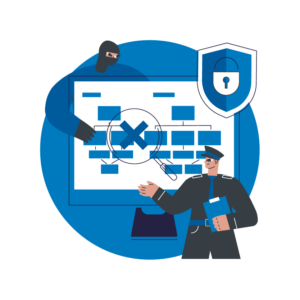
The proliferation of the Internet of Things (IoT) and the increasing reliance on software have made it easier for businesses to operate and connect with customers. But they have also opened new avenues for industrial espionage and counterfeiting. Hackers and thieves can exploit vulnerabilities in IoT devices and software to gain access to sensitive information, while counterfeiters can use the latest technologies to create convincing knock-off products. Industrial espionage involves the theft of trade secrets and other proprietary information, while counterfeiting refers to the production and sale of fake or knock-off products. These activities can have severe consequences for businesses, including financial loss, damage to reputation, and even legal action.
This article will explore the different forms of industrial espionage and counterfeiting, their impact on your business, and the various ways you can protect your business.
Industrial espionage and counterfeiting can take many different forms, all of which can be harmful to businesses.
One form of industrial espionage is the collection of confidential data about a company’s products or manufacturing processes. Individuals or groups can use this data to produce counterfeit products, sell them under another brand name at lower prices, thereby undermining the original manufacturer’s sales and profits. Another typical example of industrial espionage is falsifying documents or data, thus manipulating test results or misrepresenting the quality of a product to gain an unfair commercial advantage.
Industrial espionage and counterfeiting can cause serious harm to companies that are not well protected. Some of their main consequences are:
Multiple techniques and technologies are used in industrial espionage, all designed to gather confidential information or gain access to proprietary data. Some industrial spies may use hidden microphones or cameras to record conversations or steal technical information. This can be done physically by placing the recording devices in strategic locations or remotely using wireless technology.
Hacking software is another tool that is often used in industrial espionage. Hackers may use various techniques to gain access to secure computer systems and steal sensitive data. This includes exploiting software or hardware vulnerabilities or using phishing techniques to persuade employees to divulge confidential information by email or telephone.
Reverse engineering is another common technique that involves taking apart and analyzing a product or system to understand how it works and to recreate or copy that technology. Reverse engineering can be used legally in some situations, such as to improve existing products or to create competing products. However, attackers can illegally circumvent a company’s patents and intellectual property rights.
In addition to these high-tech methods, some spies may use more traditional tactics, such as impersonating customers, phishing or suppliers to obtain confidential information.
A critical measure for companies looking to protect themselves from these threats is for them to protect their intellectual property. This can be done through various methods, such as applying for patents, trademarks, and copyrights, and taking steps to ensure that these protections are enforced.
The best way to protect your business from these threats is with the right tools. QShield is a comprehensive solution for protecting data and applications of your desktop, mobile, and IoT devices, from design to market deployment. QShield enables device makers and service providers to :
Get in touch with our Experts to safeguard your IoT devices throughout their life cycle.
Webinar:
Why is it essential to protect the Intellectual Property of your newly developed software?
Webinar:
How to protect code and data confidentiality and integrity during the entire device lifecycle